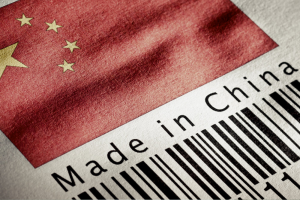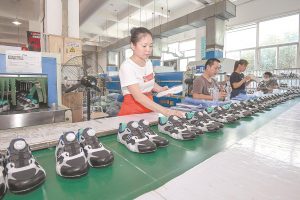1. Government policies
Discuss the role of government policies in the growth of China’s footwear industry, including tax incentives and subsidies provided to manufacturers.
Government policies have played a critical role in the growth of China’s footwear industry. To support its expansion, the Chinese government has introduced a range of policies, including tax incentives and subsidies for footwear companies.
Reduced corporate tax rates, exemptions, and breaks are among the most significant tax incentives offered by the government. These policies have encouraged investment from both domestic and foreign companies, driving growth in the industry.

Subsidies have also been instrumental in industry growth, with the government supporting shoe manufacturers by reducing production costs and improving competitiveness in the global market. These subsidies have enabled businesses to invest in new technologies, expand production capacity, and conduct research and development, resulting in higher output and revenue.
Aside from tax incentives and subsidies, the Chinese government has also implemented import and export regulations, trade agreements, and intellectual property protection laws to aid the growth of the footwear industry. These policies have created a favourable business environment for footwear manufacturers, leading to increased foreign investment and the development of new markets.
Overall, favourable government policies have been essential for the growth of China’s footwear industry. Tax incentives, subsidies, and other incentives have motivated investment and expansion, leading to greater output, revenue, and global competitiveness.
2. Technology and innovation
Describe how Chinese shoe manufacturers have employed technology to improve production efficiency, including the development of new materials and manufacturing techniques.
Chinese shoe manufacturers have been implementing innovative technologies to improve their production efficiencies and competitiveness in the global market. One key innovation has been the use of automation and robotics in shoe production.
With automation, Chinese shoe manufacturers have reduced labour costs, enhanced productivity, and improved product quality. They have also streamlined their production processes, ensuring faster turnaround times and better customer service.
In addition to automation, Chinese shoe manufacturers have also explored new materials and manufacturing techniques. For example, they have adopted 3D printing technology to produce shoe prototypes and create customised shoes for customers. Furthermore, they have explored new materials, including recycled plastics and sustainable materials, to reduce their environmental impact.
These technological advancements have enabled Chinese footwear manufacturers to maintain their position in the global market and cater to the growing demand for high-quality, yet affordable footwear. With continued investment in technology and innovation, they are well-positioned to retain their dominance in the global footwear industry for years to come.
3. Globalisation and trade
Explain how the accession of China to the World Trade Organisation in 2001 has impacted the growth of the footwear industry, as well as how Chinese shoe manufacturers have adapted to compete globally.
China’s accession to the World Trade Organisation in 2001 has had a profound effect on the growth of the footwear industry. Since then, China has become the world’s leading producer and exporter of footwear, benefiting significantly from free trade and access to global markets.
The phenomenon of globalisation has also been crucial to the growth of the industry. Chinese shoe manufacturers have had to adapt their practices to cater to global competition. They have implemented several strategies to achieve this, such as investing in new technologies and automation to improve productivity and reduce labour costs.
Furthermore, they have focused on delivering high-quality products at low prices by investing in research and development capabilities, enhancing design capabilities, and using premium raw materials. These strategies have enabled them to compete effectively with established brands in more advanced economies.
Chinese shoe manufacturers have also been able to capitalise on China’s extensive workforce, which has enabled them to produce footwear at a lower cost than other nations. Therefore, they have become an attractive destination for firms worldwide looking to outsource their production activities.
To conclude, China’s accession to the World Trade Organisation has greatly benefitted its footwear industry, while globalisation has compelled Chinese manufacturers to enhance their competitiveness by adapting to global standards. By investing in new technologies, focusing on high-quality products at low prices, and leveraging China’s vast workforce, Chinese shoe manufacturers have emerged as the leading producer and exporter of footwear globally.



